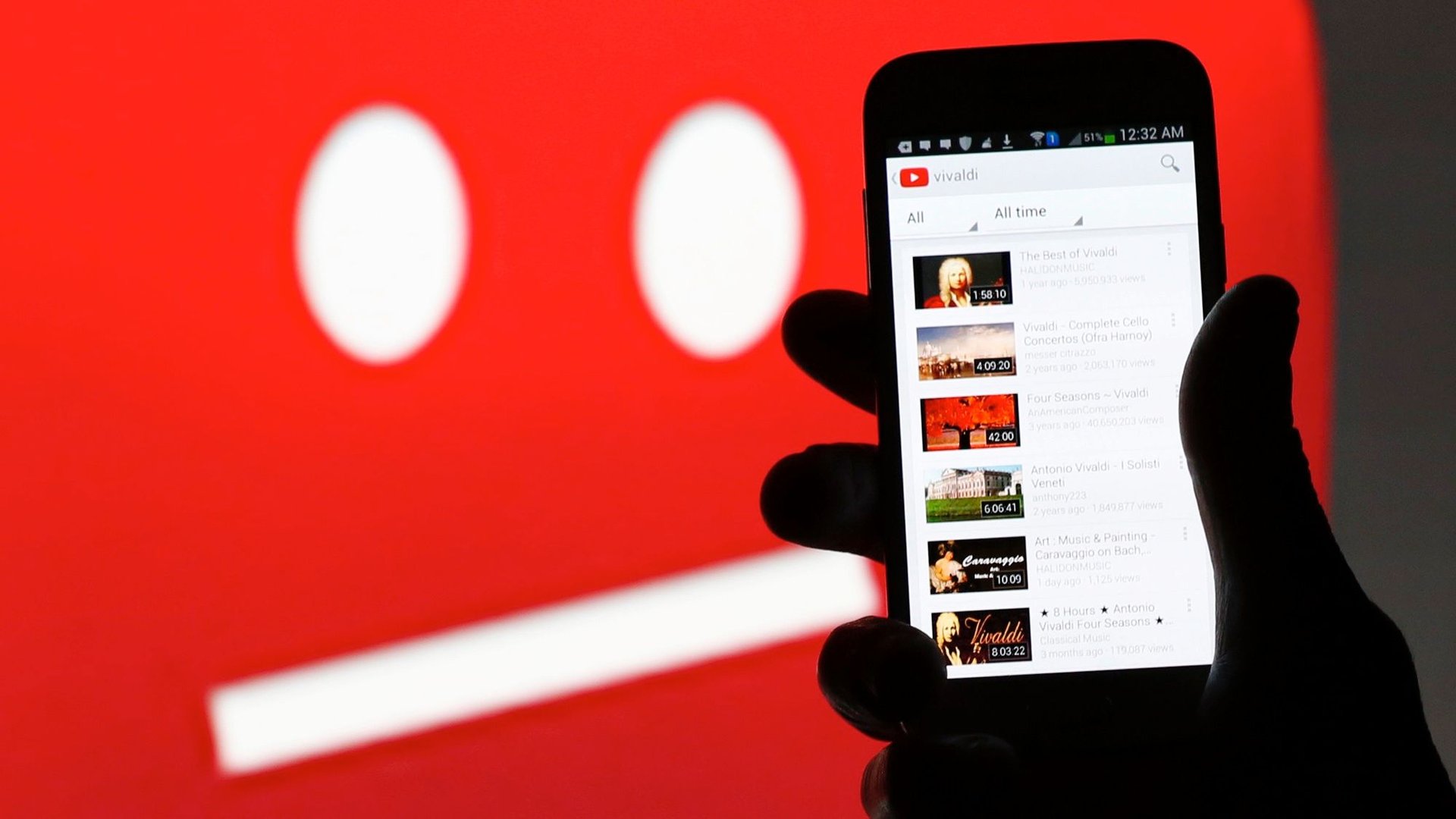Subscribing to YouTube is too confusing
YouTube is scrapping its subscription video service YouTube Red and launching two new subscription services—one for music and video, and another purely for music—which will be distinct from Google’s other music-streaming service, Google Play Music. Sound confusing? It is. Here’s what we know about how it will work.


YouTube is scrapping its subscription video service YouTube Red and launching two new subscription services—one for music and video, and another purely for music—which will be distinct from Google’s other music-streaming service, Google Play Music. Sound confusing? It is. Here’s what we know about how it will work.
YouTube’s subscription-video service YouTube Red is becoming YouTube Premium and jumping in price to $11.99 a month from $9.99 a month “soon,” the company announced today (May 17). (Existing YouTube Red subscribers will be grandfathered into their current plan rates.) That’s more than the standard plans at streaming-video rivals Netflix, Amazon Prime, and Hulu. With the pricier YouTube Premium, you’ll get the ad-free YouTube viewing, original programming, video downloads, and background play that you get now with YouTube Red, plus the features of YouTube Music Premium, which launches on May 22.
YouTube Music Premium will have playlists, songs, and albums on top of the music videos YouTube is known for. At $9.99 a month, it will be priced to compete with subscription-music rivals Spotify, Apple Music, and Pandora. It will also have some interesting, if not intrusive, ways of making personalized recommendations:
At the airport? We’ll recommend something relaxing before the flight. Entering the gym? We’ll suggest some beats to get the heart-rate going.
As part of the shift, YouTube is overhauling the existing YouTube Music app, which is currently available free with ads or ad-free with a YouTube Red subscription.
YouTube Music Premium is not be confused with Google’s other $9.99-a-month music subscription service, Google Play Music, which does not include music videos. Existing Google Play Music users will get YouTube Music included with their current plans, similar to how they currently get YouTube Red. It’s unclear if those subscribers will continue to get Red’s content and features. Quartz has reached out to Google for clarity.
YouTube Music Premium subscription service aims to take advantage of the fact that music is the most popular content among YouTube’s 1.5 billion monthly active users. It’s also what most people use the YouTube Red subscription for, according to YouTube CEO Susan Wojcicki.
Making YouTube Premium more of a destination for video than music would also allow YouTube to judge how its originals are really performing, like Cobra Kai, which has a 100% positive rating on Rotten Tomatoes but alone isn’t really reason to sign up if you’re not already on the service. Hollywood sees YouTube as a big buyer of TV and movies on par with Netflix, Amazon, and Apple, and expects the company to keep ramping up its content investment. YouTube hasn’t said how many people subscribe to YouTube Red. The Verge reported that the service had 1.5 million paying subscribers a year after its 2015 launch.
Netflix similarly broke up its subscriptions services back in 2011. It split its DVD and streaming-video businesses and charged customers more to subscribe to both. It was the right move in the end, as Netflix was moving away from its DVD business, but it was one of the few occasions when Netflix users became irate enough to quit. Netflix lost 800,000 subscribers and took more than 2 years for its stock to recover.
YouTube Red-soon-to-be-Premium’s price increase is more modest than Netflix’s was, which may stave off the blowback. Based on the comments on YouTube’s blog posts, users seem more confused by the plan changes than anything else.